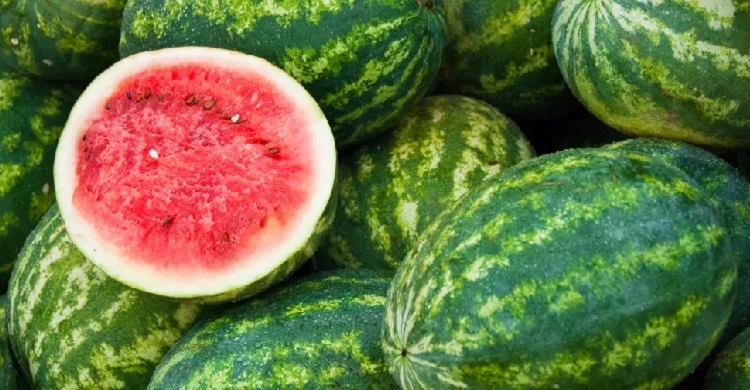| HEADLINE: |
|
Where did watermelons come from?
|
 Where did watermelons come from? The thirst-quenching fruit isn't from the Fertile Crescent of ancient Mesopotamia, as so many other domesticated crops are, research shows. Susanne Renner, a botanist at Ludwig Maximilian University of Munich in Germany, and her colleagues carried out comprehensive genetic sequencing of the domesticated watermelon (Citrullus lanatus) — the kind you might find on supermarket shelves — along with six wild watermelon species. "We found the modern genomes of the domesticated watermelon are more closely related to the Sudanese wild type than any other that we analyzed," she told Live Science. The Sudanese wild watermelon has some notable differences to the domesticated version. "The flesh is white and not very sweet, and it's mainly used as animal feed," Renner said. Nevertheless, the genetic similarity between the two species led the researchers to conclude that the Sudanese fruit is probably a precursor to the red and sweet domesticated watermelon, according to the June 2021 study published in the journal the Proceedings of the National Academy of Sciences. It's likely that ancient farmers cultivated non-bitter variants of the wild watermelon and consequently increased its sweetness over many generations through the domestication process. The red color is probably also thanks to artificial selection, in which farmers likely favored and selectively bred red fruit. When this happened and which civilization is responsible for it is slightly less clear, but Renner attempted to answer this question. She thinks the geographical location of the close wild type relative in Sudan is probably not a coincidence. We already knew that the ancient Egyptian king Tutankhamun was buried with watermelon seeds 3,300 years ago, but that isn't sufficient proof of a domesticated, sweet watermelon. "The seeds may have been used as savory snacks from a wild watermelon," Renner said.
|
Latest News
Popular News
Editor: Dr. Kazi Ertaza Hassan
All right reserved
South Western Media Group
© Daily Peoples Time
News & Commercial Office:93, Kazi Nazrul Islam Avenue, Kawran Bazar, Dhaka-1215
Phone: 88-02-41010087, 41010086, Fax: 88-02-41010085, Advertising: 88-02-41010084
E-mail: [email protected]








 The anti-Sheikh Hasina brigade has been paid back fair
The anti-Sheikh Hasina brigade has been paid back fair  Badruzzaman Badrul, the expatriate son of a brave martyr
Badruzzaman Badrul, the expatriate son of a brave martyr  Minar-e Kabir is a minaret located in Sugandia village
Minar-e Kabir is a minaret located in Sugandia village  Bashundhara Group, the country’s largest business conglomerate, has been
Bashundhara Group, the country’s largest business conglomerate, has been 



